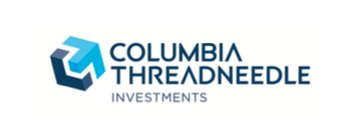Online Services:
Article library

Smoothing, simplified
09 April 2024
We learn from Head of Wealth Proposition, Kirsty Wright, why smoothed funds are the ideal investment solution to provide your clients peace of mind.

Three key findings from our latest Wealth and Wellbeing research programme
04 January 2024
For the 14th edition of our leading research programme, we asked respondents to share how they feel about the upcoming festive season, their retirement plans, financial knowledge, and their level of debt. We explore the latest takeaways and how they can be used to support adviser conversations.
Read 'Three key findings from our latest Wealth and Wellbeing research programme'

Thematic Review – the beginning of the retirement income assessment
14 December 2023

Looking back through 3 years of leading data, taking us from pandemic to present
07 November 2023
Over the last three years we’ve been tracking consumer trends across a variety of topics, from personal mental health to financial wellbeing. For the three-year anniversary of our research programme, we look back over how our research has developed since its launch to help you understand both the hopes and concerns of consumers.

Three consumer trends every adviser should know (from LV's Wealth and Wellbeing Edition 13)
04 October 2023

The Retirement Bucket approach, but smoother
07 August 2023

Are investment choices meeting client objectives?
30 May 2023

Wealth and Wellbeing Research, Edition 11 – the key findings, and what they mean for financial advice
11 April 2023

Key takeaways from the Spring Budget – March 2023
16 March 2023
On Wednesday, Jeremy Hunt delivered one of the most crucial budgets in recent times. During a period of high inflation, a cost of living crisis and uncertainty in the markets, the Chancellor’s statement was highly anticipated.

Silicon Valley Bank – what happened, and what does it mean for investors in our Smoothed Managed Funds?
14 March 2023
On Friday 10 March Silicon Valley Bank (SVB) collapsed. This was met with concern from the US Treasury and Federal Reserve, the UK Treasury, and wider financial markets. Whilst there have been reports that Columbia Threadneedle Investments had exposure to the bank, we can confirm that Smoothed Managed Funds investor exposure is negligible, and clients should not feel any tangible impact.

The pain of losing is twice as powerful as the pleasure of gaining
Tamlin Russell, February 2023
As many sports fans can attest, the disappointment when your favourite team loses can linger longer than the happiness felt from winning a game. The same can happen when it comes to personal finances. There is a tendency for individuals to prefer avoiding financial losses to acquiring equivalent gains.
Read 'The pain of losing is twice as powerful as the pleasure of gaining.'

UK Autumn Statement: tough economic times lie ahead
Columbia Threadneedle Investments, November 2022
In this short note, produced by Columbia Threadneedle Investments, in partnership with LV=, we summarise the reaction to the announcement of the Autumn Statement 2022, and outline what it means for investors in our Smoothed Managed Funds.

Defaqto Smoothed Managed Funds Q&A Due Diligence report 2022
Research and due diligence are cornerstones of financial advice, and ensuring the suitability of a product for clients has never been more important.
We commissioned Defaqto to carry out a due diligence review of our Smoothed Managed Funds range to offer advisers an independent evaluation of our proposition.
Read 'Defaqto Smoothed Managed Funds Q&A Due Diligence report 2022'

Research reveals an increase in worried consumers - could smoothing be the solution?
George Pullar, July 2022
The results of the latest LV= Wealth and Wellbeing Monitor highlight how the finances of millions of people are feeling the squeeze of the cost of living crisis.
Read 'Research reveals an increase in worried consumers - could smoothing be the solution?'

Advice opportunities with the mass affluent
Jon Grundy, April 2022
Covid-19 presented a once in a generation event, causing a seismic shift to the finances, needs, and priorities of the UK population. Since the start of the pandemic LV= has been conducting research into the UK population’s financial and wellbeing trends, and publishing our findings in the quarterly Wealth and Wellbeing report.

The investment journey balancing act
Adam Ruddle, October 2021
We seem to talk a lot about risk these days. Whether it’s risk of infection or the risk of investment, that four letter word is high on most peoples’ agenda. Of course, managing risk is nothing new – and as an insurer with a 178-year heritage, risk is a currency we’re pretty familiar with.

Coronavirus outbreak accelerates wealth transfer between generations
Clive Bolton, November 2020
Coronavirus has been a huge shock to the UK and our survey of the UK population’s financial confidence, health and attitudes to spending, saving and wellbeing reveals just how worried people are about the future.
Read 'Coronavirus outbreak accelerates wealth transfer between generations'

How to increase your protection business
04 April 2024
Often when you reflect on those clients that decided they didn’t want to take out protection after being offered your professional advice, it can start to feel a little personal.

Financial resilience and the art of selling
Mike Farrell, September 2019
A lot of progress has been made professionalising the advice sector with qualifications, examinations and CPD. But we know that people don’t buy based on facts and logic, they buy through emotion – too often we forget that. Selling is an integral ingredient to financial planning, and an absolute essential when it comes to protection and the financial resilience of your clients.

Why equity release is resilient
Patrick Oldham, April 2024
For many people, 2023 was a year of negotiating the cost of higher interest rates and economic uncertainty, while feeling the impact of inflation on everyday living costs. As a result, consumers are sensibly choosing to be much more considered about how they access the equity tied up in their property.

My outlook on the later life lending landscape
Georgina Oxton, October 2022
The later life lending sector continues to grow, despite wider inflationary pressures and recession woes. Figures from the Equity Release Council* revealed that total lending reached £1.71bn in Q3 2022. New customer numbers increased by 34% year-on-year, with 13,452 new equity release plans agreed between July and September. These record breaking figures show the shift in the landscape and that lifetime mortgages are now being considered to enhance later life plans, and are no longer perceived as a last resort.
